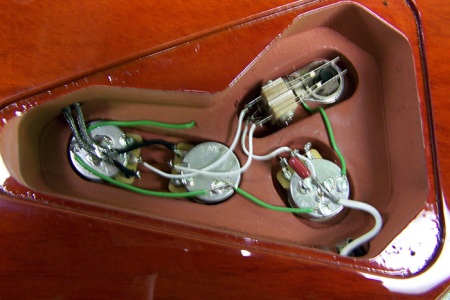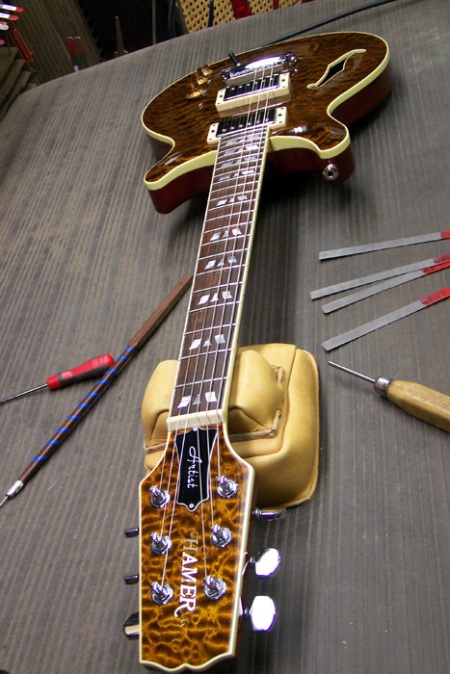Throughout the years we have been graced with a pheonomenal assortment of highly skilled luthiers, spanning Hamer’s various eras and guitar styles. This didn’t happen by chance. We sought out the best and most talented individuals and then began a relentless undertaking of cultivating them with Hamer’s spirit and luthiery techniques.
The result is that over our 30+ year history we have been able to instill an unsurpassed commitment to quality in our team to build the Ultimate guitars. These are the people who create our guitars; these are our Masterbuilders. Execution at this level of luthiery is no easy task. Very few can do it.
Many question which era of Hamers were the best. Much hinges on the style of guitar you are drawn to. Regarding build quality, we feel that we are at our pinnacle. However, we would have said the same thing in the past and probably will do so in the future. That’s because we are never satisfied; we always want to improve. At any point in time our guitars are generally the best that they have ever been.
This Watson may be from another era but it was definitely created today. The neck cavitiy is chiseled open for a seamless neck joint. Add a blended heel to the equation and you have unsurpassed access at the highest frets.

Speaking of frets, we’ve reviewed sanding of both our woods and finishes, we’d like now to review how we sand, or level, our frets. The process is not unlike sanding wood or a finish in that we use progressively finer grits.
The first step in a Hamer fret job is to straighten the neck. We then take a custom built aluminum honing block with 220 grit cloth and just touch the frets to determine whether they are all level. Then, starting at the nut, we lightly sand the frets with the 220 cloth on the honing block so that each fret is ever so slightly lower than the fret before it.

Using a diamond 320 crowning file we then remove any flat spots on the crown of the bead.

We then go over the frets with a jitterbug sander using 240MX paper.

Next, we hand sand with 800 grit paper.

This is followed by another hand sanding, this time with 1000 grit sandpaper, a very fine grit with which to sand metal.

Finally, we polish the frets with 0000 steel wool.
There’s a very high skill level required to effect this process. The trick is to take off only the bare minimum of fret material with each progressive sanding. This is how our luthiers create the silky feel that is a Hamer fret job.
Finally the neck and the body are bonded together. 
This is luthiery.
This is masterbuilding.














































































































